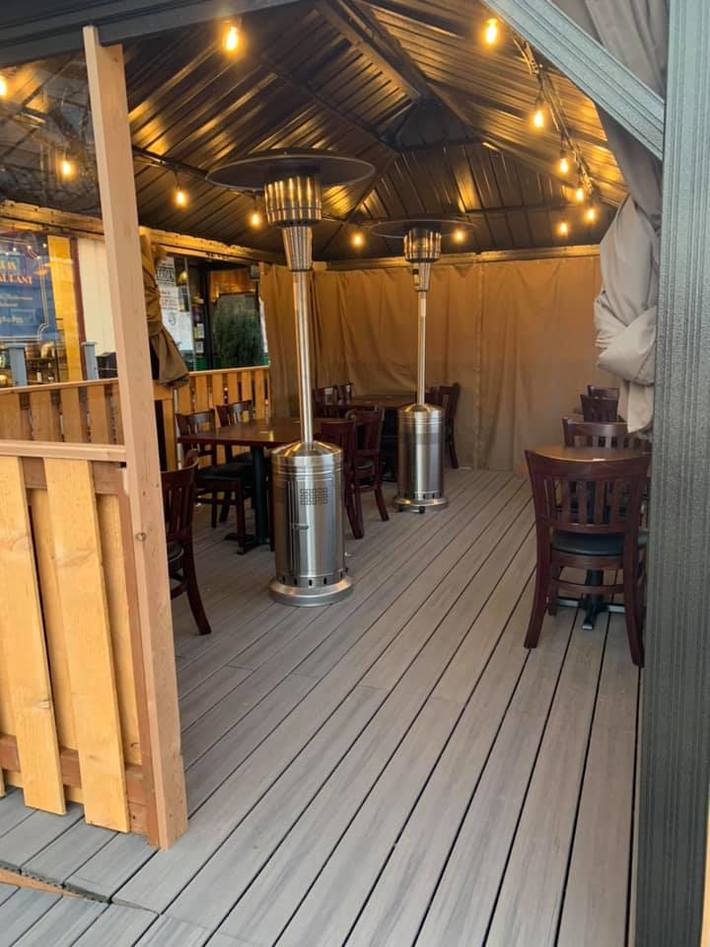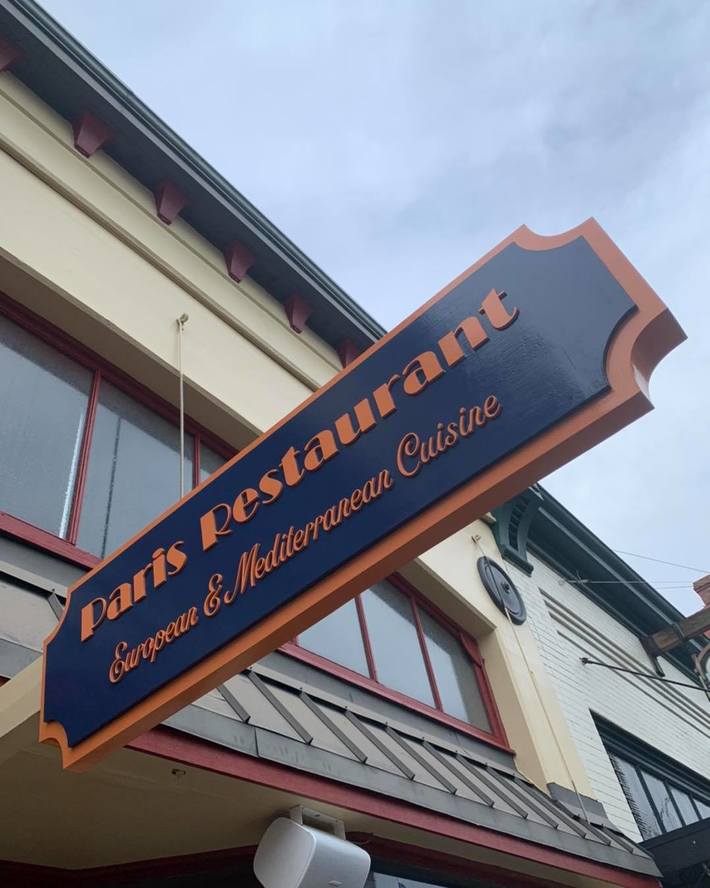I am a data scientist, and decided to open a restaurant last November, 10 days before the governor in my state banned dining-in (who knows for how long) and customers were already rare. Some data scientists in managerial positions dream about exiting the corporate world and envied me, at least before the Covid, when I told them my plan.
Here I explore the options and opportunities available, and this article reflects my optimism. I will also discuss analytics in some detail. The reasons for opening a restaurant are varied, and in my case I saw the opportunity in a wealthy town with many foodies, mostly retired from companies such as Amazon, Boeing or Microsoft, who left the Seattle area to live on a little island where the pace of living is much slower, roads are not clogged with commuters, and the landscape is beautiful: Anacortes in Fidalgo Island, next to the San Juan islands, in the Pacific Northwest. Despite being next to the ocean, not a single restaurant offers fresh oysters or crab, there is no great restaurant, and if anything (after selling my company) I thought I would open a restaurant at least so that there is a dining venue I really love in Anacortes. I knew from the very beginning that we would fill a void, and that there was no competition.

Our outdoor seating
After chasing locations throughout the Puget Sound without any luck, I found by chance the perfect spot in the very heart of historical downtown Anacortes. The landlord did not want a franchise, a chain, and even turned down a bank. Rent here is 3 times cheaper than in Seattle, and hourly rates for restaurant workers are much lower too, though it is impossible to find qualified people to serve fine cuisine (you must train them). We were lucky to find a great chef who worked in great restaurants in Seattle and left the city years ago for the same reasons that I did. We are also very close to farmers, and all our food comes from local farmers. Not exactly cheap, but people are willing to pay a bit more for fresh local ingredients – this is a long-lasting trend in this industry.
We agreed on a few statistics: food cost should be 1/3 of revenue, staff another 1/3, and 15-20% of the revenue going towards rent, utilities, insurances, etc. Now with Covid, we are operating at a controlled loss probably for the next three months, but we are on the path to success. Rather than closing for three months like plenty of restaurants do, we though we should take advantage of this to develop our brand and becoming known — and stay open despite the extra cost. We also decided to stop expensive construction on the second floor, and instead focus on heated outdoor dining and cheaper solutions that have a direct positive impact. At the end of the construction stage, we even looked at purchasing used appliances, rather than brand new.
Despite having no experience in the restaurant industry, I am a foodie with tremendous experience as a customer. In particular, I told what the prices should be, given the town we are in and the kind of food we serve. The Chef focused on dishes where he could meet the goal of 1/3 of revenue spent on food (that is, a dish sold for $18 costs $6 in ingredients on average), with waste optimization also being a goal (for instance, unsold fresh oysters served as baked oysters the next day). I even purchased some ingredients myself such as excellent Islandic caviar 10 times cheaper than Beluga. People coming from the big city 90 miles South consider our restaurant as inexpensive, and capable of successfully competing with hip restaurants in Seattle if we were located in that town.
Original ideas to succeed
Here are some concepts that we embraced:
- Having a little retail store within the restaurant, selling home-made preparations made by the chef, and wines
- Opening a wine club with paid membership
- Using the second floor for storage, for the retail store, rather than for dine-in
- Opening the patio in the back, the heated tent on the front street, and some other space outside to maximize occupancy
- Discontinuing breakfast except weekends, due to negative ROI
- Creating our home deliver service to be more affordable than Doordash
- Organizing our menu items in such a way as to optimize revenue (by displaying best sellers at the top, revenue increased 5 times on Doordash)
- Being the only European restaurant in the county
- Using pictures of our dishes when posting on social networks, as well as on our website
- Offering family meals to go, serving 2 or 4 people
- Partnering with grocery stores to sell our products
- Having weekly specials that we can announce in social networks and via our fast-growing mailing list, to keep customers returning
- Serving the right size, that is less than the average restaurant, along with small dishes, in plates that are not as large as in many restaurants (this reduces waste and we can lower our prices accordingly)
Marketing and advertising
We are present and very active on all local Facebook groups, including our Facebook page and the Skagit Restaurant page that we created for all restaurants in our county. Since our menu has new additions every week, we can post original content all the time. Many people in town use Facebook, thus this is our favorite platform. We also advertise with them.
We created our newsletter, growing to 500 subscribers in a month. Much of our advertising on Google is geared towards growing the newsletter. We are working on a blog (the first article will be 10 tips to help your favorite restaurant applicable to any restaurant, we hope it will go viral) and in the long term, we plan on selling recipes from our chef on the website. Finally, as we grow, we plan on using the outdoor tent from our restaurant neighbors, when they are closed. We may even serve Tequila from our neighbor (Mexican restaurant) with revenue on hard liquor going directly to them, if we use their tent.
Advertising on Yelp was a failure, and we noticed and stopped it. Yelp clearly does not help its advertisers regarding reviews (a good thing) but it eliminates reviews randomly, good or bad, with their supposedly smart machine learning algorithm. Maybe to force us to advertise more? Phone calls coming from Yelp advertising were rarely a local number (unlike calls originating from Google ads), and lasted 2 seconds. Not different from click fraud. We are happy that Yelp represents less than 2% of our traffic, as we tried very hard to build our audience organically and via word of mouth thanks to the excellent and original food that we serve.
We also invited our partners (local farmers, accountant etc.) for a free diner during the short window of time when dining-in was allowed. The meal was free, but not the wine. We also plan on having our brochure distributed in all the local hotels, and maybe advertise our restaurant on all the receipts people get when they go shopping to a grocery store.
The results
The last few days have seen revenue growing fast to the point that we will probably operate at a loss for much less than 3 months, beating the expectations. And before Thanksgiving when dining-in was allowed, it was clear that we would be successful, being almost profitable while operating at 25% capacity.
You can find us at ParisRestaurantAndBar.com.

About the author: Vincent Granville is a data science pioneer, mathematician, book author (Wiley), patent owner, former post-doc at Cambridge University, former VC-funded executive, with 20+ years of corporate experience including CNET, NBC, Visa, Wells Fargo, Microsoft, eBay. Vincent also founded and co-founded a few start-ups, including one with a successful exit (Data Science Central acquired by Tech Target). You can access Vincent’s articles and books, here.
